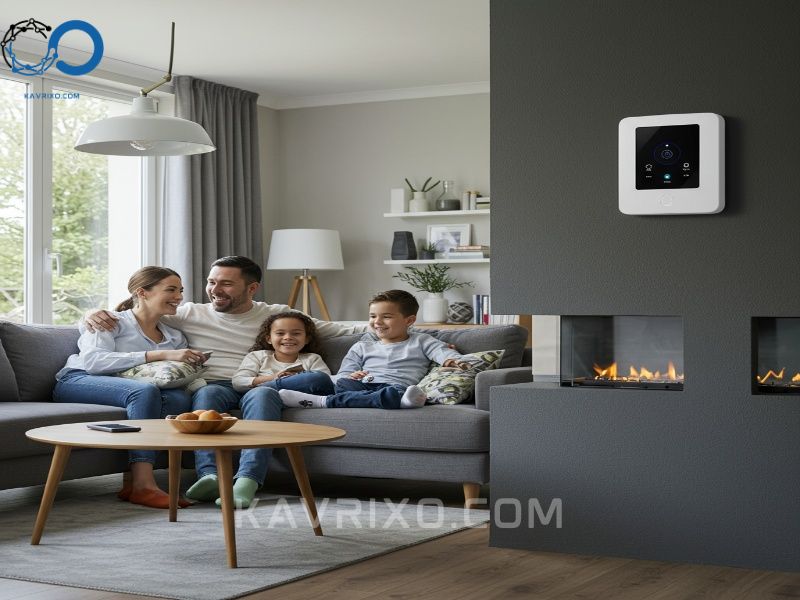In the world of home security, the old adage rings truer than ever: prevention is better than cure. While a comprehensive defense strategy involves layers of protection—from exterior lighting to surveillance cameras—the cornerstone of any effective system must address the primary point of entry: the front door. Choosing the right front door alarm is not just about installing a loud siren; it’s about integrating a reliable, smart, and responsive component into your overall door security system.
This guide delves deep into the necessity, technology, and selection criteria for robust door alarm systems, ensuring you can make an informed decision to safeguard your most valuable asset—your home. We will explore everything from basic contact sensors to advanced, professionally monitored door security alarm systems.
Contents
- 1 The Critical Role of the Front Door Alarm in Home Defense
- 2 Decoding the Types of Front Door Alarm Systems
- 3 Essential Features to Look for in a Modern Door Security System
- 4 Installation and Placement: Maximizing Your Door and Window Alarms
- 5 Comparing the Best Door Alarm Systems on the Market
- 6 Maintenance, Testing, and Troubleshooting Your Door Security
- 7 Conclusion: Securing Peace of Mind with the Right Front Door Alarm
The Critical Role of the Front Door Alarm in Home Defense
The front door, welcoming to friends and family, is statistically the most frequently exploited entry point for intruders. Whether it’s a quick kick-in or a subtle lock-picking attempt, securing this threshold is paramount. A high-quality front door alarm serves multiple crucial functions beyond simply alerting you to a break-in; it acts as a powerful deterrent, signaling to potential criminals that the risk outweighs the reward.
Understanding Entry Point Vulnerability
While we often focus on windows or back doors, studies consistently show that roughly 34% of burglars enter through the front door. This makes the front door alarm the single most critical sensor in your entire setup. If an intruder is confronted immediately upon entry—before they have a chance to survey the property or locate valuables—they are far more likely to abandon the attempt.
A basic lock is merely a physical barrier; a modern door security system adds an immediate, non-negotiable response layer. The moment the magnetic contact is broken, the alarm is triggered, initiating the countdown for the siren and, often, the notification of emergency services.
Beyond Simple Deterrence
While the blaring noise of a door burglar alarm is the most obvious deterrent, modern systems offer nuanced protection. They can track access attempts (even failed ones), provide real-time alerts to your smartphone when a door is left ajar, and differentiate between a family member disarming the system and an unauthorized entry. This level of insight transforms the alarm from a reactive tool into a proactive monitoring device, giving homeowners unparalleled peace of mind.
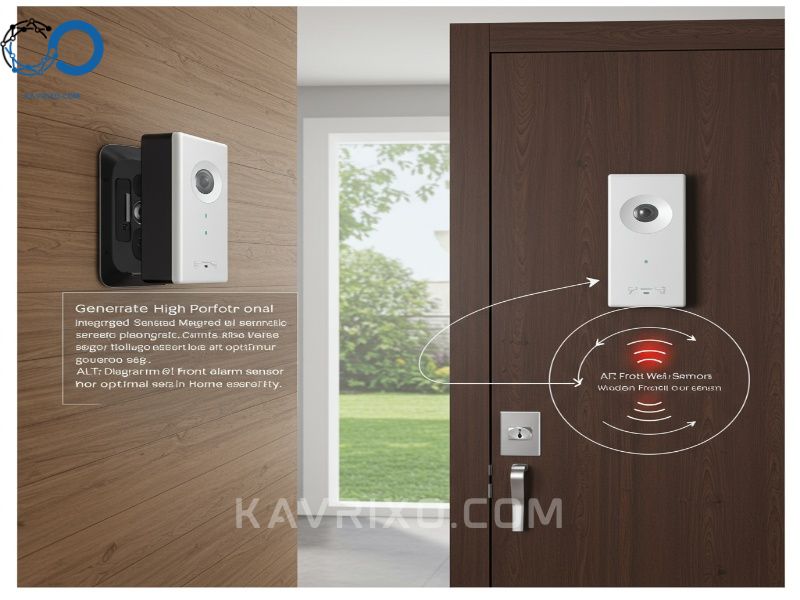
Decoding the Types of Front Door Alarm Systems
The market for door alarm systems is vast, ranging from simple battery-powered devices to complex, integrated smart home networks. Understanding the core technologies helps in selecting the system best suited for your property’s layout and your security needs.
Contact Sensors (The Basics)
The backbone of nearly every door security alarm system is the contact sensor. These devices typically consist of two parts: a sensor placed on the door frame and a magnet placed on the moving door itself. When the door is closed, the magnetic field is intact. When the door is opened, the connection is broken, and the circuit triggers the alarm.
- Standard Wired Sensors: Highly reliable and often used in older or professionally installed systems. They require running wires, which can be difficult after construction is complete.
- Wireless Contact Sensors: The industry standard today. They use batteries and communicate wirelessly (via Wi-Fi, Z-Wave, or proprietary frequencies) with a central hub. They are easy to install, making them popular for DIY security setups. These are the most common components used in the best door alarm setups.
Motion Sensors and Glass Break Detectors (Layered Protection)
While contact sensors cover the actual opening of the door, true comprehensive security requires secondary defenses, especially if an intruder attempts to bypass the lock or sensor entirely.
Glass Break Detectors
These sensors listen for the specific frequency and decibel level associated with breaking glass. If your front door has sidelights or substantial glass panels, a glass break detector near the entrance can trigger the front door alarm before the intruder even steps across the threshold.
Interior Motion Sensors
Often placed strategically near the entrance hallway, interior motion sensors serve as a backup. If the intruder manages to sneak past the primary contact sensor (though rare), the motion sensor will catch their movement inside the home, activating the door burglar alarm.
Smart Doorbell Alarms (Visual and Two-Way Communication)
Modern security systems often blend entry protection with visual verification. A smart doorbell, while primarily a camera, functions as an excellent secondary front door alarm.
- Immediate Alerts: They notify you immediately when someone approaches the door, often before they even touch the handle.
- Visual Verification: If the primary alarm is triggered, you can instantly check the video feed to confirm if it’s a false alarm (e.g., a pet or neighbor) or a genuine break-in attempt, allowing you or monitoring services to react appropriately.
- Tamper Alerts: Some advanced doorbell units include integrated tilt or impact sensors that trigger an alert if the unit is physically tampered with or removed from the wall, adding another layer to the door security system.
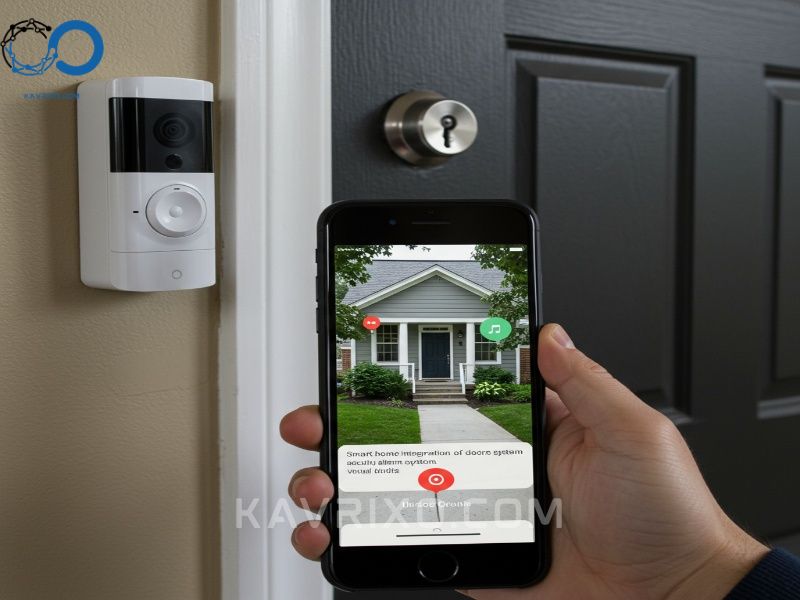
Standalone Door Alarms vs. Integrated Door Security Alarm Systems
When choosing a best door alarm, a fundamental decision is whether to opt for a simple, localized alert device or a fully integrated system.
Standalone Alarms
These are typically small, battery-operated units placed directly on the door or window frame. They emit a loud chirp or siren when the contact is broken. They are inexpensive and easy to install, often used for apartments, dorm rooms, or supplementing existing security. However, they are not connected to external monitoring or your smartphone.
Integrated Door Security Alarm Systems
These systems link all security components (door sensors, window alarms, motion detectors, keypads, and cameras) to a central hub. This hub is the brain that communicates with the homeowner (via app) and/or a professional monitoring service. If you are looking for comprehensive protection, especially incorporating the best door and window alarms across the entire property, an integrated system is the superior choice.
Essential Features to Look for in a Modern Door Security System
A successful door security alarm system must be reliable, easy to use, and capable of adapting to future technology. When shopping for the best solution, certain features are non-negotiable.
Connectivity and Smart Home Integration
In the age of connected homes, a standalone siren is often insufficient. The best door alarm should be able to communicate effectively with other devices.
- Protocol Compatibility: Look for systems that use standard protocols like Z-Wave, Zigbee, or Matter. This ensures the front door alarm can talk to your smart thermostat, lighting, and other security devices. For instance, if the alarm is triggered, integrated lighting can automatically flash, further deterring the intruder and aiding emergency responders.
- Mobile App Control: Full control via a mobile application is essential. You should be able to arm/disarm the system remotely, check the status of all sensors, and receive instant push notifications if the door burglar alarm is activated.
Monitoring Options: Self-Monitored vs. Professional Monitoring
The reaction speed of your security system is often determined by the monitoring plan you select.
Self-Monitored Systems
When the front door alarm triggers, the hub sends an alert directly to your phone. The responsibility then falls on you (or a designated contact) to verify the threat and call emergency services. This is cost-effective but relies on your immediate availability and responsiveness.
Professional Monitoring
When the alarm triggers, the signal goes to a 24/7 monitoring center. Trained professionals attempt to contact you and, if necessary, dispatch police or fire departments immediately. For robust, guaranteed protection, particularly against serious events, professional monitoring integrated with your door security alarm system is highly recommended.
Battery Backup and Tamper Protection
Power outages are a common vulnerability. A quality door security system must continue functioning even if the main power is cut.
- Battery Backup: Ensure the main hub and critical sensors (like the keypad and siren) have lithium-ion battery backups that can last for at least 12 to 24 hours. A battery-powered front door alarm sensor should also have long-lasting, easily replaceable batteries (typically CR2 or AA).
- Tamper Protection: Sophisticated burglars often attempt to disable the system before entering. Look for sensors and hubs that activate an alarm if they are physically removed from the wall or opened. This is a critical feature for any reliable door burglar alarm.
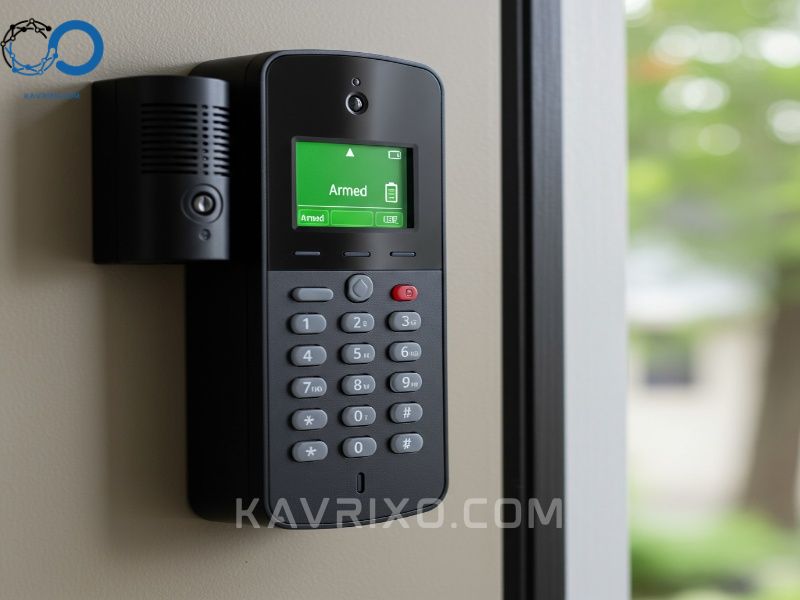
Loudness and Siren Effectiveness (The Door Burglar Alarm Factor)
The immediate impact of an alarm is its sound. The siren must be loud enough to be heard by neighbors and, more importantly, disorient and panic the intruder.
- Decibel Level: Look for sirens rated at 100 dB or higher. Sirens are often located either within the central hub or as separate, external units.
- External Siren: Placing an external siren prominently outside the home serves as an additional deterrent. When activated, it clearly signals the location of the break-in, a feature vital for effective door alarm systems.
Installation and Placement: Maximizing Your Door and Window Alarms
Even the best door alarm will be useless if improperly installed. Strategic placement and careful installation are key to ensuring the reliability and effectiveness of your security coverage.
DIY vs. Professional Installation Considerations
Many modern wireless door security alarm systems are designed for easy DIY installation.
- DIY Advantages: Cost-effective, quick setup, and you retain full control over placement. This is ideal for renters or those comfortable with basic tech setup.
- Professional Advantages: Ensures correct placement, integration with existing infrastructure, and typically includes verification that the system communicates effectively with the monitoring center. Professional installers are also adept at integrating best window alarms seamlessly with the door sensors.
If you opt for DIY, ensure you follow manufacturer instructions precisely, particularly regarding the alignment of the magnetic contact for the front door alarm.
Strategic Placement of the Front Door Alarm Sensor
The placement of the contact sensor is crucial. While most sensors attach to the main door frame, there are specific considerations:
- Avoid Gaps: The magnet and the sensor unit must be placed close enough to maintain contact when the door is closed (usually within half an inch). Gaps can lead to false alarms or failure to arm.
- Secure Attachment: Use strong adhesive or screws to ensure the sensor cannot be easily knocked off or shifted over time due to door slamming or temperature changes.
- Secondary Doors: Don’t forget any adjacent utility doors or garage access doors that might be considered secondary ‘front’ entry points. Treat them with the same level of protection as your primary front door alarm.
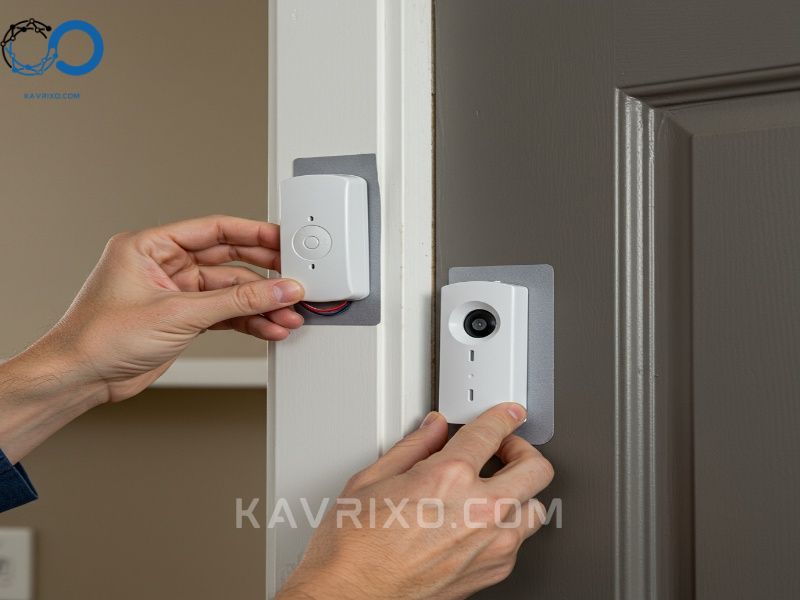
Integrating Best Window Alarms for Comprehensive Coverage
A secure home requires attention to all vulnerable points. While the front door alarm is the priority, windows are often the second-most common entry point.
- Window Contact Sensors: Similar to door sensors, these detect when a window is slid or opened.
- Best Window Alarms (Glass Break): For large, fixed windows, glass break sensors are more effective than contact sensors, which only monitor the opening mechanism.
- Comprehensive Packages: When purchasing a door security alarm system, look for packages that offer a generous number of sensors to cover all ground-floor windows and any easily accessible upstairs windows. Effective integration of the best door and window alarms provides a protective shell around your home.
Comparing the Best Door Alarm Systems on the Market
The selection of door alarm systems often boils down to budget, required features, and desired level of professional support.
Professional Grade Door Alarm Systems (e.g., ADT, Vivint)
These systems offer end-to-end service, typically including consultation, professional installation, and proprietary equipment that is tightly integrated.
- Pros: Highest reliability, 24/7 professional monitoring, comprehensive warranties, and immediate technician support. The door security alarm system is entirely managed by the provider.
- Cons: Higher monthly fees, often require long-term contracts, and the equipment is usually locked to the provider’s service.
DIY Wireless Door Alarm Systems (e.g., Ring, SimpliSafe, Abode)
These have exploded in popularity due to flexibility and affordability. They often integrate seamlessly with smart home platforms.
- Pros: Low upfront cost, flexible monitoring options (self-monitored or month-to-month professional monitoring), and easy user expansion (you can add a new front door alarm sensor yourself in minutes). These systems consistently rate highly as the best door alarm options for homeowners seeking flexibility.
- Cons: Reliability depends on your Wi-Fi strength, and troubleshooting rests primarily on the homeowner.
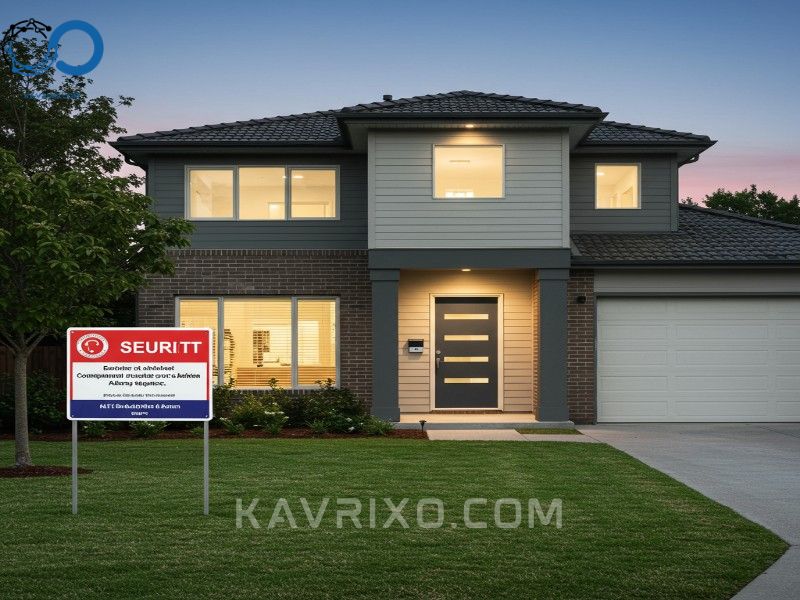
Budget-Friendly Standalone Solutions
For very small spaces or temporary needs, battery-operated stick-on alarms remain a viable option.
- Pros: Extremely cheap, no subscription fees, requires zero installation expertise.
- Cons: Only provides localized noise, no remote alerts, and offers no integration with other security measures. They serve as a very basic door burglar alarm but lack the sophistication of a full system.
Maintenance, Testing, and Troubleshooting Your Door Security
Even the most advanced door security alarm system requires routine attention. Maintaining your front door alarm ensures it performs flawlessly when you need it most.
Routine System Checks and Sensor Health
Make it a habit to test your system at least once a month.
- Test Mode: Put your system into “Test Mode” (this usually alerts the monitoring center not to dispatch police).
- Trigger Sensors: Open the front door to trigger the front door alarm. Listen for the chime and check the hub display to ensure the sensor registered the breach.
- Battery Replacement: Wireless sensors rely on batteries. Most modern systems alert you when batteries are low, but it’s wise to proactively replace them every 1-2 years, especially in high-traffic areas like the main door. Dead batteries are the number one cause of security failure in door alarm systems.
Dealing with False Alarms
False alarms are inconvenient and, if frequent, can lead to fines from local police departments, especially with professionally monitored systems.
- Sensitivity Adjustment: If motion sensors are causing false alarms (e.g., catching pets), check if the system allows you to adjust the sensitivity level.
- Installation Alignment: The most common cause of false alarms in front door alarm contact sensors is misalignment. Ensure the sensor and magnet are perfectly parallel and close enough. Temperature fluctuations can sometimes cause door frames to shift slightly, requiring minor sensor adjustments.
- Educate Users: Ensure everyone who uses the home (family, housekeepers, dog walkers) knows the disarming code and the proper procedure for entering the house to avoid accidental triggers of the door burglar alarm.
Conclusion: Securing Peace of Mind with the Right Front Door Alarm
The security of your home starts and ends at the entry point. Investing in a robust front door alarm is the single most effective measure you can take to deter criminals and protect your family.
Whether you choose a comprehensive, professionally managed door security alarm system or a highly rated DIY solution utilizing the best door and window alarms, prioritize reliability, responsiveness, and smart integration. By carefully considering the technology, monitoring options, and strategic placement, you can establish an impenetrable perimeter that provides true, lasting peace of mind. Your door security system isn’t just a set of sensors; it’s the guardian of your home.
